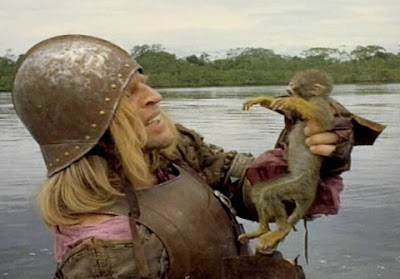In a modest house, lying in the shadow of two large smoke stacks, a young woman grows teeth in her vagina. Writer/director Michell Lichtenstein forges a fast, fun horror film with some bite, but struggles to add any penetrating insight to the issues it opens up.
 Dawn (Jess Weixler) belongs to a Christian group which preaches sexual abstinence before marriage at high school. Unknown to the world, she has a physiological condition called vagina dentata. Most days she is harassed and ridiculed by the pot-smoking pupils who fail to see the point in not having sex. Dawn’s new boyfriend also doubts his commitment to celibacy.
Dawn (Jess Weixler) belongs to a Christian group which preaches sexual abstinence before marriage at high school. Unknown to the world, she has a physiological condition called vagina dentata. Most days she is harassed and ridiculed by the pot-smoking pupils who fail to see the point in not having sex. Dawn’s new boyfriend also doubts his commitment to celibacy.
Teeth never goes all the way and shows us the titular fangs, but we see the effects. Dawn’s troubled brother gets his finger sliced in the paddling pool when they’re children. It’s not long before someone loses some fingers and, if you don’t wish to see a severed penis, you may want to cross your legs and look away.
Lichenstein constructs a situation which demands we see some promised toothy action, even though Dawn has vowed to remain chaste. Problematically, this requires Dawn to be violated for the film to get its way.
There aren’t many men in Dawn’s life who don’t have an unhealthy attitude to sex. An unethical gynaecologist seems perfectly happy to vigorously examine her without another woman present. Dawn’s brother noisily bangs his girlfriend while the family sit and listen. And at school, she befriends one boy, then another, who exploit her. Lichenstein mines some uncomfortable and blackly comic scenes from this.
Teeth juggles tension and humour, with mildly successful digs at Young Christians, corporate pollution and youth culture. It is solidly directed and very well played even when the story is running out of steam. It seems lazy writing to make Dawn so fervent about sex and sin when her own sexual organs are so demonic. But what sits most uncomfortably is when Dawn allows herself to have sex with someone she doesn’t want to in order to deliver a forced emasculation. The place that Dawn finds herself by the end of the film seems a betrayal of the character.
The local power-plant and it’s smoke-stacks sit proudly in every exterior shot of the house, belching out greasy, black smoke, as though to suggest a cause for events. In truth, the cause is more prosaic. Someone wanted to make a film about a toothed vagina and, while not without some bloody pleasures and slippery horror, failed to make it all quite hang together.





















